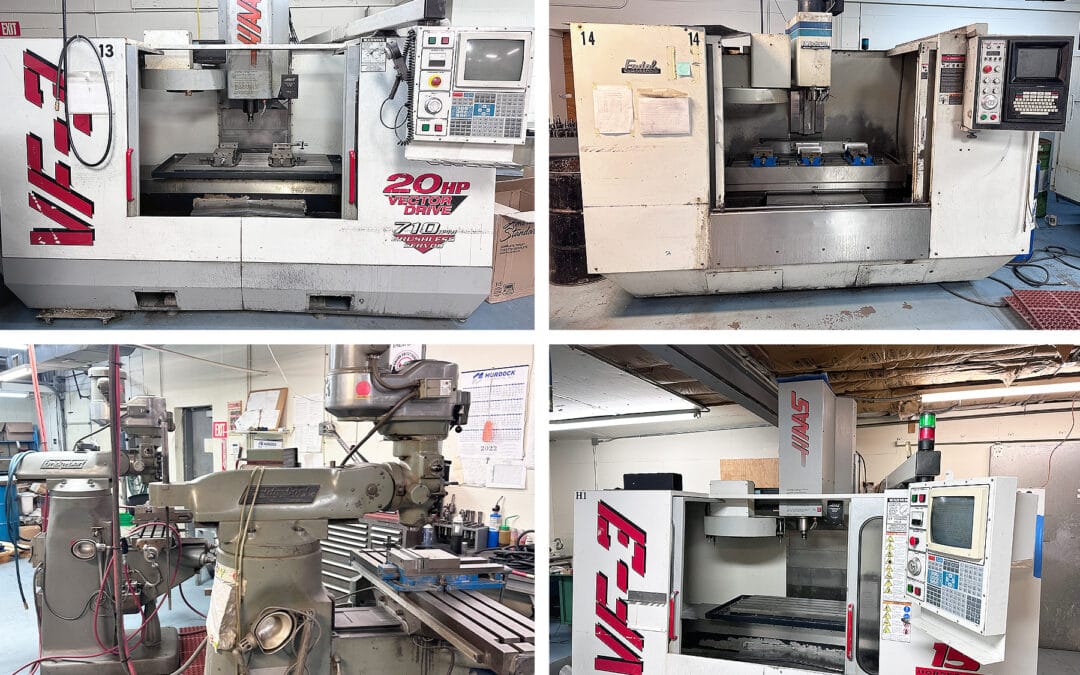Navigating the Industrial Auction Timeline: Before, During, and After the Gavel Falls
Industrial auctions are a vital marketplace for used industrial equipment, offering buyers an opportunity to acquire valuable assets and sellers a means to liquidate surplus machinery. To make the most of an industrial auction, it’s essential to understand the comprehensive timeline that spans before, during, and after the auction day. We’ll guide you through each phase, providing insights into what can be expected throughout the process.
Before the Auction
Preparation and Assessment
- Asset Evaluation: Before listing equipment for auction, sellers should thoroughly assess the condition and market value of their industrial assets. This evaluation helps set realistic expectations for the auction’s outcome.
- Documentation: Sellers should gather all necessary documentation, including maintenance records, titles, and any relevant warranties. Accurate information enhances the appeal of the equipment to potential buyers.
Marketing and Promotion
- Advertising: Auction companies use various channels, such as online listings, industry publications, and email marketing, to promote the upcoming auction and the equipment available.
- Inspection Period: Potential buyers are typically given the opportunity to inspect the equipment before the auction. This period allows them to assess the condition and suitability of the items they’re interested in.
- Online Bidding: Many industrial auctions offer online bidding options, allowing participants from around the world to participate in the auction remotely. This expands the potential buyer pool.
Day of the Auction
Registration and Check-in
- Registration: Buyers must register for the auction, providing their contact information and agreeing to the auction terms and conditions.
- Bidder Numbers: Upon registration, participants receive bidder numbers that they use to place bids during the auction.
Auction Process
- Opening Remarks: The auctioneer or auction company representative typically provides an introduction and overview of the auction rules.
- Item Presentation: Each item up for auction is presented individually, often with detailed descriptions, including specifications and condition reports.
- Bidding: Bidding begins, with participants raising their bidder numbers or using online bidding platforms to place bids on the items they want. The highest bidder wins the item.
- Reserve Prices: If the auction has reserve prices set by the seller, the auctioneer will announce whether the reserve has been met before selling the item.
- Bid Increments: Auctions typically have predetermined bid increments that participants must follow when placing bids. These increments vary based on the current bid amount.
- Final Sale: Once an item’s highest bid is accepted, it becomes a final sale, and the buyer is legally obligated to complete the purchase.
Payment and Settlement
- Payment: Buyers are expected to make payment promptly, usually within 48 hours after winning an item. Accepted payment methods and deadlines are usually outlined in the auction terms.
- Pick-up Arrangements: Buyers must also arrange for the removal and transportation of the purchased equipment. Some auction companies provide assistance with logistics.
After the Auction
Invoicing and Documentation
- Invoices: Sellers or the auction house will issue invoices to the buyers, detailing the items purchased and the total amount due.
- Payment Confirmation: Once payments are received, sellers confirm the transactions with buyers and provide necessary documentation, including proof of ownership and transfer of titles.
Item Removal
- Timely Retrieval: Buyers are typically given a specified period to remove their purchased equipment from the auction site. It’s crucial to adhere to these timelines to avoid additional fees.
- Logistics: For large or heavy items, buyers may need to arrange for specialized transportation and equipment for safe removal.
Post-Auction Evaluation
- Feedback and Review: Auction companies often seek feedback from both buyers and sellers to assess the overall experience and identify areas for improvement.
- Settlements: Sellers receive their proceeds from the auction, minus any applicable fees and commissions.
Still have questions from an auction seller or auction buyer standpoint? Learn more on what to expect at an auction with our Industrial Auction Seller FAQs and Industrial Auction Buyer FAQs.
Conclusion
The industrial auction timeline is a well-structured process that involves careful preparation, active participation on auction day, and diligent follow-up afterward. Whether you’re a seller looking to liquidate surplus equipment or a buyer seeking valuable assets, understanding each phase of the auction process is key to a successful outcome. Industrial auctions serve as a dynamic marketplace where industrial equipment finds new homes, and with the right approach, both sellers and buyers can achieve their objectives in this thriving industry.
Revelation Auctions is an industrial equipment auctioneer with over 270 years of combined experience in auctions, metalworking, process, plastics, and packaging equipment experience. From our first phone call to your final payment, you’ll get a dedicated team of certified auctioneers who will plan and execute every detail of your auction. Reach out to our industrial auction experts for a free confidential consultation today.

